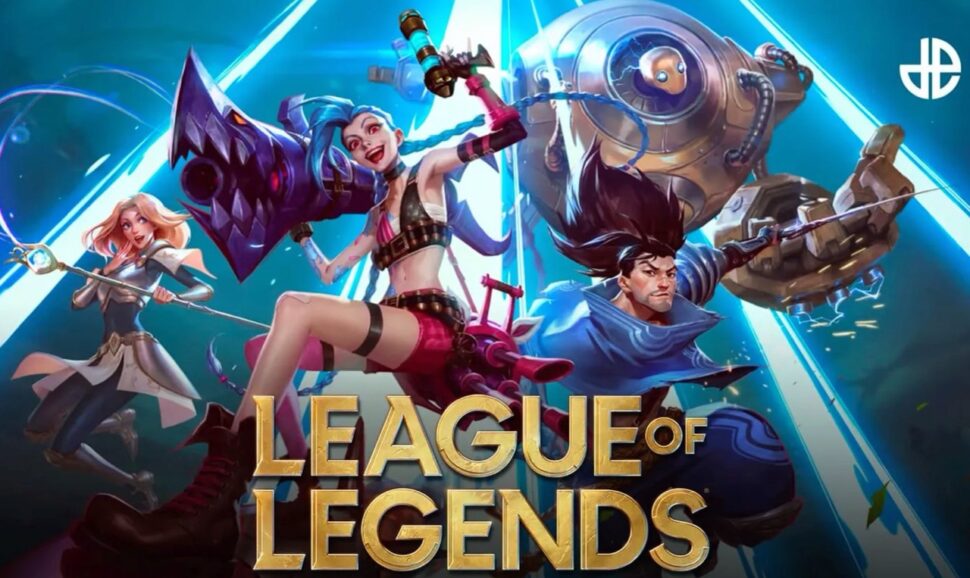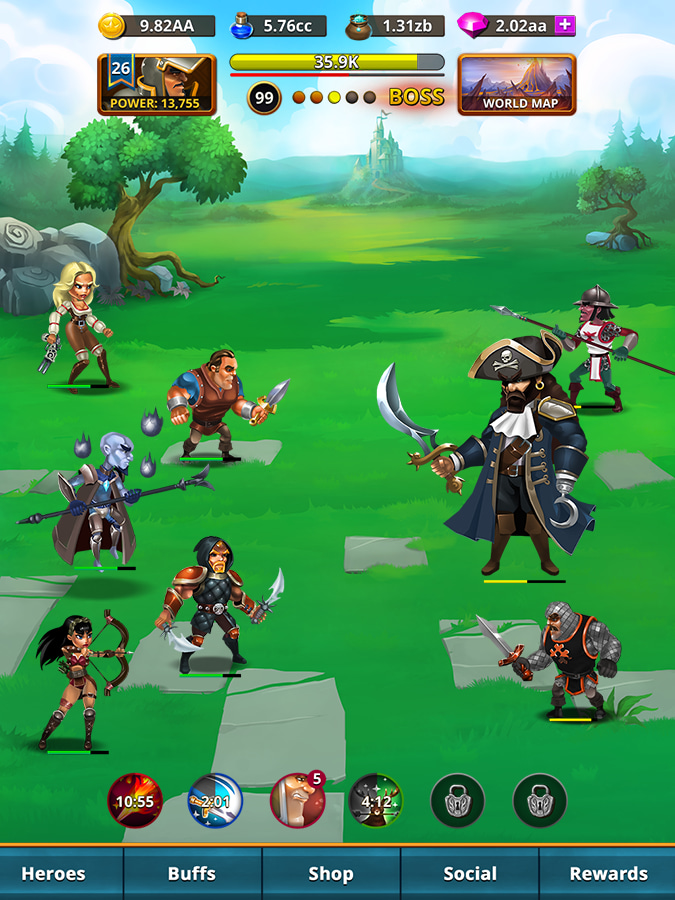As a game developer or designer, chances are you’ve heard of the game design document (GDD). It’s one of the most referenced documents in the game industry, and for good reason, too.
The GDD is essentially a roadmap for your video game, detailing everything from your game concept and mechanics to its setting and characters. It’s not only for you, the developer. The GDD guides everyone involved in the project, including the designers, programmers, artists, testers, sound engineers, etc.
Even if you’re a solo developer, you’re still likely to have a team for other aspects beyond your capabilities, which is why you need a GDD. This roadmap guarantees clear communication, streamlined development, and a seamless transition from “I have an idea for an app” to “my game is up and running!”
But if you’ve never created a game design doc or need to refresh your memory, you’ve come to the right place.
In this piece, you’ll learn how to create the perfect GDD — one that is lighter and easier to craft, unlike traditional ones, which are often overwhelming and hard to maintain.
What to know before writing a game design document
Before creating your GDD, there are a few things to consider. They include:
Game project scope and team size
Are you a solo/indie developer trying to bring your idea to life, or are you working with a development team? The answer impacts the level of detail needed in your GDD. The former can get away with a concise document focusing on the core ideas, while the latter needs a more comprehensive GDD to keep team members on the same page.
The complexity of the game itself also plays a role. A simple mobile game with a limited set of mechanics (like Flappy Bird) might not require the same level of detail as a sprawling open-world RPG (like The Legend of Zelda: Breath of the Wild). The latter’s document would include details about world design, combat mechanics, story, progression systems, etc.
Development style
The development methodology you choose will also influence your GDD approach. Agile development emphasizes flexibility and continuous iteration – so in this case, your GDD has to adapt alongside your game’s development. As you prototype and test your mechanics, it should evolve to reflect the changing shape of the game.
A good example is Riot Games, the creators of League of Legends. They developed the game using Scrum (a type of agile framework), and their GDD likely reflected this. Then, as time passed, they innovated and developed another agile framework called the Agile Team Leadership Model. It’s safe to assume their GDD also evolved to reflect the new framework.
Conversely, Waterfall development follows a more structured approach, where one step follows another chronologically. With this methodology, you’d need a more comprehensive GDD upfront to lay a solid foundation for the entire development process. Think of most older games – their creators probably used the Waterfall model.
Note: most modern teams use Agile, and you can switch from Waterfall to Agile if the former isn’t working for you. For instance, CD Projekt Red first built Cyberpunk using the traditional phase-by-phase Waterfall method, but it failed in the market. So, the developers returned to the drawing board and used Agile for the next launch, which was a huge success.
Target audience
Knowing your target audience (their expectations, preferred genres, and skill level) is extremely important in game development and also influences your GDD. Your audience informs decisions about difficulty, story complexity, and visual style. Pinpointing your target demographic will help you customize your GDD to reflect the overall experience of the game you want to create.
A game like Candy Crush targets a broad audience, so ideally, its GDD should ensure accessibility for all ages and skill levels.
How to write a game design document
A GDD has several sections, including:
- Executive summary
- Overview
- Game world
- Characters
- Game mechanics
- Story
- Level design
- Visual/audio design
- Technical specifications
- Monetization strategy
- Marketing
- Project management
Here’s a step-by-step process on how to create a GDD following this structure.
Title page and table of contents
First impressions matter, so start with a title page showcasing your game’s name, version, author(s), and date. Include a detailed table of contents to allow for easy navigation.
Executive summary
Next, hook your readers (your team members, potential collaborators, or other stakeholders) with a concise overview of your game so they can quickly grasp the vision. Highlight the game’s core concept, key features, target audience, and what makes it stand out. This summary should capture the essence of the game and what makes it unique.
Game overview
Different from the summary, the overview provides enough detail to give readers a clear picture of the game and how it will be played. This is where you specify the genre and target platforms (PC, console, mobile), project size, complexity, and development timeline.
Gameplay mechanics
Now, it’s time to dive into your game’s core rules and how players will interact with the world. Explain the core gameplay loop, controls, movement systems, and combat mechanics, ensuring readers understand how players will navigate and engage with the game. Don’t forget to detail unique gameplay features that set your game apart.
Furthermore, describe the player progression system. How do players earn rewards, unlock abilities, and overcome challenges? This could involve experience points, skill trees, or other mechanics that provide a sense of accomplishment and motivate players to continue their journey.
Story
If your game features a narrative, this is the time to define the plot, key events, and overall story arc. First, outline the main characters’ journeys, conflicts, and resolutions. Then, describe the tone and style of the narrative and how it will be delivered to players (cutscenes, dialogue, environmental storytelling). If applicable, include sample dialogues or scripts to give a sense of the narrative style.
A well-crafted narrative can significantly enhance the player experience and create a deeper emotional connection to the game world.
Visual and audio design
Music and sound effects can complement the visuals, enhance the gameplay experience, and evoke specific emotions in players. Include concept art, mood boards, UI mockups, animations, sound effects, music, and any other visual or auditory element to showcase the desired visual style and user interface.
Technical specifications
In this section, specify the game engine being used (Unity, Unreal Engine, etc.), platform(s) the game will be developed for, technical requirements, software tools, programming languages, and any other technical details necessary for the development team.
Monetization strategy
Here, state how the game will generate revenue, whether through sales, in-app purchases, subscriptions, ads, or other monetization methods. Also, establish your pricing model (such as free-to-play, premium, or subscription).
Marketing and distribution
Describe how you’ll market and promote the game. Include channel-specific promotion tactics (including mobile app optimization and App Store SEO), distribution channels, community engagement, social media, ads, and partnerships with influencers or platforms.
Project management
Create a development timeline, milestones, team roles, responsibilities, and communication protocols. This will ensure smooth coordination and progress throughout development.
Appendix
Finally, write a glossary of terms used in the document. Add references for any sources, additional reading materials, and other relevant documents or resources.
Examples of real game design documents
Here are some design document examples you can take inspiration from:
- The Doom Bible
- Silent Hill 2
- Diablo
- Bioshock GDD
- Race ‘n’ Chase (Grand Theft Auto)
- Deus Ex Continuity Bible
Best practices
- Make your GDD clear and concise. Avoid jargon and technical terms that might not be familiar to everyone on your team. Structure your content with clear sections, headings, and subheadings for easy navigation.
- Don’t try to include everything in the GDD. Focus on the core elements of your game and provide enough detail to guide development.
- Use visual aids like concept art, mockups, flowcharts, maps, and diagrams to illustrate your ideas.
- Create your GDD in a tool with collaborative features (like Google Docs) and share it with your team so they can contribute. A collaborative approach ensures everyone is on the same page and can contribute to the game’s vision.
- Understand that game development is an iterative process, and your initial GDD might need to adapt as you progress. Be prepared to adjust your mobile game design based on feedback or evolving creative ideas.
One way to get customer feedback on your game during development is by using a polling and survey platform like PickFu. PickFu lets you test different game elements, like app name ideas, character designs, art styles, and game trailers with your target audience and get immediate feedback. You can also use it for market research and proof of concept testing.
For example, here’s an Open-Ended poll a PickFu customer ran to know if players would like a game with a certain art style. Audience responses included:
- “Yes, I would play a game like this. I think this style reminds me of Torchlight, blocky in the same way although a lot less colorful.”
- “No, it looks very monotone and generic.”
- “I might play an open world game in this art style depending on what the story of the game is, how the combat is, and what kind of reviews it gets. If I just had to go off the art style alone with no other factors then I would say no, probably not.”
Or this three-option Ranked poll comparing character designs:
Respondents chose Option A as the winner because of the following reasons:
- “I feel like this character is the one that looks like they would be a great viking and one that is ready to go all out. The other two don’t look like they would be up for much. They look down and gloomy.”
- “A is unique and striking, while avoiding the (inaccurate) stereotype of the horned helmet. C fits right into this stereotype which makes it by far the least interesting. B is ok, and interesting, but nothing about it really screams ‘viking’ to me.”
What’s more, PickFu is how Beetroot Lab settled on Conor McGregor as the face of the marketing assets of Dystopia: Contest of Heroes. With more than 1 million downloads and a 4.8-star rating, this was clearly the right move.
Another notable example is Ready Chef Go!, a game with more than 70 million players. The creators, Mojiworks, use PickFu for quick and easy user testing of key creative assets like icons and tiles.
Create a game design document for every new game
Your GDD is more than just a document – it’s the guide to your game’s success. Follow the process and guidelines provided here to create a great GDD that effectively communicates your vision, guides your team, and lays the foundation for a successful game.
Remember, it’s a living document, so adapt it to your project’s specific needs and keep it evolving as your game takes shape. With this, you’re well on your way to bringing your game idea to life.
FAQs
What is in a game design document?
A GDD outlines the core concept, gameplay mechanics, story, characters, and visual design of a mobile or video game. It also includes technical specifications, monetization strategy, and marketing plans. Essentially, it serves as a blueprint and reference point for the entire game creation process, ensuring everyone on the team is on the same page.
Who writes the game design document?
It’s typically a collaborative effort by the game development team and stakeholders. The composers usually include game designers, artists, programmers, and even sound designers and writers. They all brainstorm and contribute their expertise and vision to create a comprehensive document that guides the design process.
How long is a game design document?
The length of a video game design document varies greatly depending on the game’s complexity. It can range from a few concise pages for smaller projects to hundreds of pages for larger, more intricate games. The key is to provide enough detail to guide development without getting bogged down in unnecessary information.




